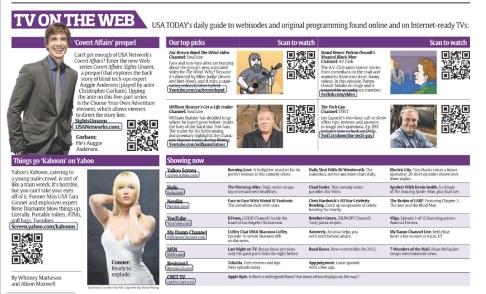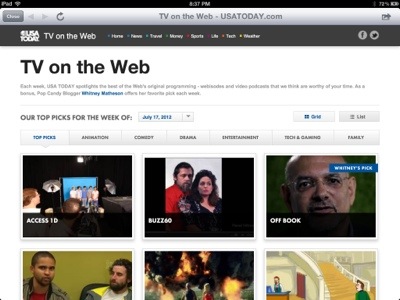Today we launched the new USAToday.com.
Thank’s to the magnificent and tireless work of an army of engineers, designers, programmers, product managers, editors, etc., under the direction of Gannett Digital president David Payne, we are taking a huge step into the future, not without risk, by creating what we believe is a major step for our viewers and advertisers.
The new USAToday.com is a dramatic change for both.
For our readers and viewers it represents a significant step toward visual storytelling, but one that respects the fact that no two readers are alike, especially during times of significant technological change. We give you several options on how to view news, information, entertainment and advertising but all involve significant curation by our editorial staff, the heart and soul of the value we bring to this storytelling process. This creation is truly a collaborative work between dedicated technologists and equally dedicated journalists.
We give the reader the ability to use visuals or words in varying degrees in their consumption process. And we will do it in varying degrees. If the reader wants, for example, he or she can view each story by starting with a photograph or a video. They can even use a device we call “Cover Mode” (see the little book-like design at the top of the page) that allows them to see each story via a full-page photograph, the most dramatic use of still photography in the storytelling process we have ever seen on the Internet.
We give you the ability to view by our definition of importance or by anyone’s definition of timeliness. By merely scrolling over a visual reference to a story they can also see more text to put that story in context. And by viewing our “Right Now” column along the right side of the page, you will see relevant social media reactions to the ongoing story in real-time.
Our horizontal navigation, inspired by the growing and already massive use of tablets, allows the reader to “peruse” the sections or the stories on the site by turning pages, re-imagining the “discovery” process we so love in the print media. It allows you to be surprised by content you didn’t know existed, but to do so at your own speed, depending upon your time and inclination.
The horizontal “page-turning” experience also allows our advertisers to reclaim the full-page ad they so dearly want and need. We allow those advertisers the chance to use the entire palate in whatever way they want to grab your attention, all the time giving you the same ability you had in print to turn the page. But watch out, you are going to see some wonderful ads that use dramatic visual tools from interactivity to video to draw you in.
Advertising in general has also changed in a big way on this site. Gone are the many small units that appears in different places on the page, frequently below the “fold” or unavailable until you scrolled down. We listened to our readers and our advertisers, and we have reacted by giving both a better experience. We have limited the advertisers to fewer but much more dramatic positions, giving them the same chance we are giving ourselves of telling their stories better and reaching more people with increasingly dramatic tools.
This is truly a major step into the new world of digital storytelling, one that empowers them, as storytellers with their own story to tell, to use every tool available: video, audio, text, photography, interactivity and more to tell his or her story. This is a step in the reinvention of storytelling, it’s also a step in the reinvention of how news will be created and consumed. We’re extremely excited to be part of that process.
Much more to come. Watch over the next few weeks as we roll out our new tablet and mobile apps, and if you haven’t recently, take a look at our print newspaper, too. It has also begun to embrace the strengths of a print product in today’s media mix and you will be surprised. And we are making it easier on all platforms for you to contact us. In the spirit of this new era of communications, please send us your comments, ideas and suggestion.













